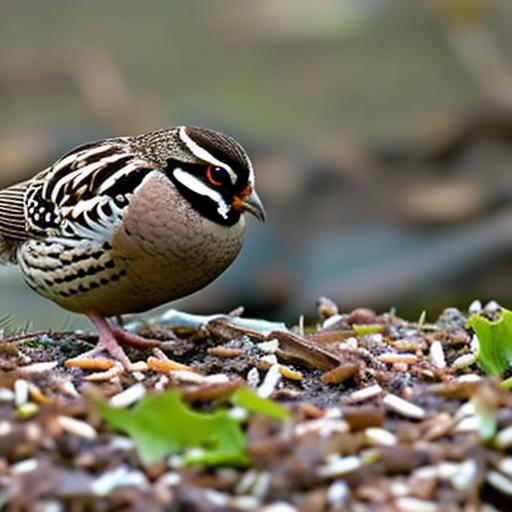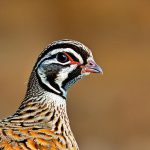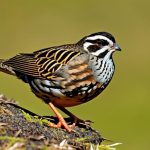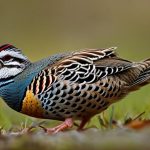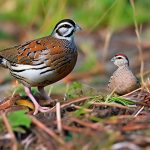Incubating quail eggs is a fascinating process that allows you to witness the miracle of life firsthand. Quail eggs are small and delicate, making them a unique challenge to incubate successfully. However, with the right knowledge and equipment, anyone can successfully hatch quail eggs at home. Incubating quail eggs involves carefully controlling temperature, humidity, and turning the eggs regularly to ensure healthy embryo development. It’s a rewarding experience that can lead to a new generation of quail for your farm or backyard.
Quail eggs typically take around 17-18 days to hatch, making them a relatively short-term incubation project compared to other poultry species. During this time, it’s crucial to monitor the incubator closely and make any necessary adjustments to ensure optimal conditions for the developing embryos. Once the eggs start hatching, it’s important to be prepared to assist any struggling chicks and remove them from the incubator promptly to prevent any potential harm to the newly hatched quail. In this article, we will explore the incubation period for quail eggs, factors affecting incubation time, signs of hatching, and the importance of removing hatched quail chicks from the incubator.
Key Takeaways
- Incubating quail eggs is a delicate process that requires careful attention and monitoring.
- The incubation period for quail eggs is typically around 17-18 days, but can vary depending on factors such as temperature and humidity.
- Factors such as temperature, humidity, and egg turning can affect the incubation time of quail eggs.
- Signs of hatching in quail eggs include chirping sounds, movement, and pipping (small cracks in the eggshell).
- It is important to remove hatched quail chicks from the incubator promptly to prevent them from being harmed by other eggs or the incubator itself.
- Leaving quail chicks in the incubator too long can lead to dehydration, suffocation, or injury from other hatching eggs.
- After the incubation period, the final steps include transferring the hatched quail chicks to a brooder with proper heat, food, and water.
Incubation Period for Quail Eggs
The incubation period for quail eggs typically ranges from 17 to 18 days, depending on various factors such as temperature, humidity, and egg handling. It’s essential to maintain a consistent temperature of around 99.5 degrees Fahrenheit (37.5 degrees Celsius) throughout the entire incubation period. Fluctuations in temperature can negatively impact embryo development and hatch rates. Humidity levels should also be carefully monitored, with an ideal range of 45-55% relative humidity for the first 14 days, increasing to 65-70% during the final days of incubation to facilitate hatching.
Turning the quail eggs regularly is another critical aspect of the incubation process. This helps prevent the embryo from sticking to the inner membrane of the eggshell and promotes even heat distribution. Quail eggs should be turned at least three times a day, with a gentle rotation of 180 degrees each time. It’s important to stop turning the eggs three days before the expected hatch date to allow the embryos to position themselves for hatching. By maintaining optimal conditions and adhering to a consistent turning schedule, you can maximize the chances of a successful hatch within the typical 17-18 day timeframe.
Factors Affecting Incubation Time
Several factors can affect the incubation time of quail eggs, potentially leading to variations in hatch dates. One of the most significant factors is temperature fluctuations within the incubator. If the temperature is too high or too low for an extended period, it can disrupt embryo development and delay the hatching process. Similarly, inconsistent humidity levels can also impact the incubation time, as inadequate moisture can lead to dehydration of the embryos, while excessive moisture can hinder proper air exchange within the egg.
The quality and fertility of the quail eggs themselves can also influence the incubation time. Fresh, fertile eggs from healthy quail are more likely to develop on schedule and hatch within the expected timeframe. On the other hand, older or infertile eggs may not develop at all, leading to a longer incubation period or no hatch at all. Proper egg handling and storage before incubation are crucial in ensuring optimal conditions for embryo development and timely hatching. By addressing these various factors and maintaining consistent environmental conditions, you can minimize potential delays in the incubation time of quail eggs.
Signs of Hatching
As the incubation period progresses, there are several signs that indicate the quail eggs are nearing hatching. One of the most noticeable signs is the sound of chirping or peeping coming from inside the eggs. This indicates that the chicks are actively moving and vocalizing as they prepare to hatch. Additionally, you may notice the eggs wobbling or rocking as the chicks inside begin to break through the eggshell using their egg tooth, a small projection on their beak specifically designed for this purpose.
Another sign of imminent hatching is pipping, which refers to small cracks or holes appearing in the eggshell as the chicks start to emerge. This process can take several hours as the chicks gradually work their way around the egg, aided by their instinctual pecking behavior. Once a chick has fully emerged from its shell, it will rest and dry off before joining any other hatched chicks in the incubator. It’s important to resist the urge to assist with hatching unless absolutely necessary, as interfering with this natural process can cause harm to the chicks and disrupt their ability to regulate body temperature.
Importance of Removing Hatched Quail Chicks
After hatching, it’s crucial to promptly remove the newly hatched quail chicks from the incubator to prevent any potential harm or stress. Leaving hatched chicks in the incubator can lead to overcrowding and increased humidity levels, which can negatively impact the health and well-being of the chicks. Additionally, hatched chicks may inadvertently trample or peck at unhatched eggs or newly hatching siblings if left in the incubator too long.
Removing hatched quail chicks also allows them to start feeding and hydrating themselves, promoting a smooth transition into their brooder environment. Delaying their removal from the incubator can lead to dehydration and exhaustion as they continue to exert energy without access to food and water. By promptly transferring hatched chicks to a suitable brooder setup, you can ensure their immediate welfare and create a more favorable environment for any remaining unhatched eggs or late-hatching chicks.
Risks of Leaving Quail Chicks in the Incubator Too Long
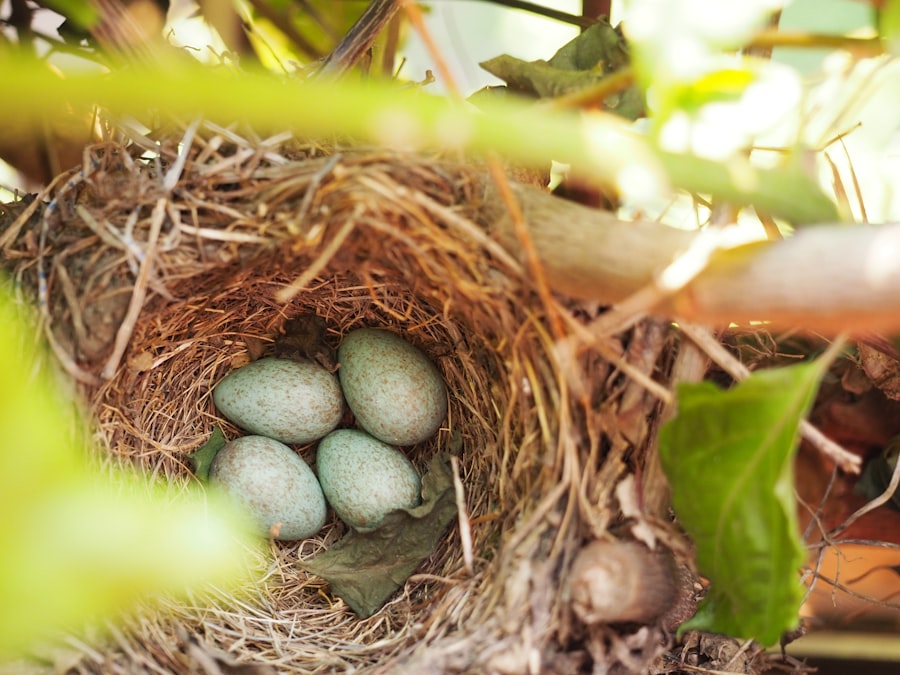
Leaving quail chicks in the incubator for an extended period after hatching poses several risks that can compromise their health and survival. Overcrowding is one of the primary concerns, as hatched chicks can quickly fill up available space in the incubator, leading to increased competition for resources and potential injuries from trampling or pecking. High humidity levels resulting from accumulated moisture from hatched chicks can also create a damp environment that predisposes them to respiratory issues and bacterial infections.
Furthermore, leaving hatched quail chicks in the incubator too long can disrupt their natural behavior and development. Chicks require access to food and water shortly after hatching to replenish their energy reserves and kickstart their growth. Delaying their removal from the incubator can lead to dehydration, weakness, and reduced vitality, ultimately impacting their long-term health and productivity. By promptly transferring hatched chicks to a suitable brooder environment, you can mitigate these risks and provide them with essential care and resources for a successful start in life.
Final Steps After Incubation Period
Once the majority of quail eggs have hatched and any remaining viable eggs have been given sufficient time, it’s time to conclude the incubation period. Remove any unhatched eggs from the incubator and carefully inspect them for signs of life or development. Discard any eggs that show no signs of pipping or movement, as they are unlikely to hatch at this point.
After removing all unhatched eggs, clean and disinfect your incubator thoroughly to prepare it for future use. Proper sanitation is essential for preventing the spread of pathogens and ensuring a healthy environment for future hatches. Once your incubator is clean and dry, it’s ready for storage until your next batch of quail eggs is ready for incubation.
In conclusion, incubating quail eggs is a rewarding experience that requires careful attention to detail and dedication throughout the entire process. By understanding the incubation period for quail eggs, factors affecting incubation time, signs of hatching, and best practices for removing hatched chicks from the incubator, you can maximize your chances of a successful hatch and set your quail chicks up for a healthy start in life. With proper care and management, you can enjoy watching your quail chicks grow and thrive as they become valuable members of your flock or farm.
If you’re wondering how long to keep quail in an incubator, it’s important to understand the incubation period and the optimal conditions for hatching. For more information on creating the perfect environment for your poultry, check out this insightful article on choosing the best coop for chickens. Understanding the right coop setup is essential for raising healthy and happy quail or chickens.
FAQs
How long should quail eggs be kept in an incubator?
Quail eggs should be kept in an incubator for approximately 17-18 days before they hatch.
What is the ideal temperature for incubating quail eggs?
The ideal temperature for incubating quail eggs is around 99.5 degrees Fahrenheit (37.5 degrees Celsius).
How often should quail eggs be turned in the incubator?
Quail eggs should be turned at least 3-4 times a day during the incubation period to ensure even heating and proper development.
Should the humidity level be monitored during the incubation of quail eggs?
Yes, it is important to monitor the humidity level during the incubation of quail eggs. The humidity should be around 50-60% for the first 14 days, and then increased to 65-70% for the final 3-4 days before hatching.
What should be done once the quail eggs start hatching?
Once the quail eggs start hatching, it is important to leave the chicks in the incubator for at least 24 hours to dry off and fluff up before moving them to a brooder.
Meet Walter, the feathered-friend fanatic of Florida! Nestled in the sunshine state, Walter struts through life with his feathered companions, clucking his way to happiness. With a coop that’s fancier than a five-star hotel, he’s the Don Juan of the chicken world. When he’s not teaching his hens to do the cha-cha, you’ll find him in a heated debate with his prized rooster, Sir Clucks-a-Lot. Walter’s poultry passion is no yolk; he’s the sunny-side-up guy you never knew you needed in your flock of friends!

